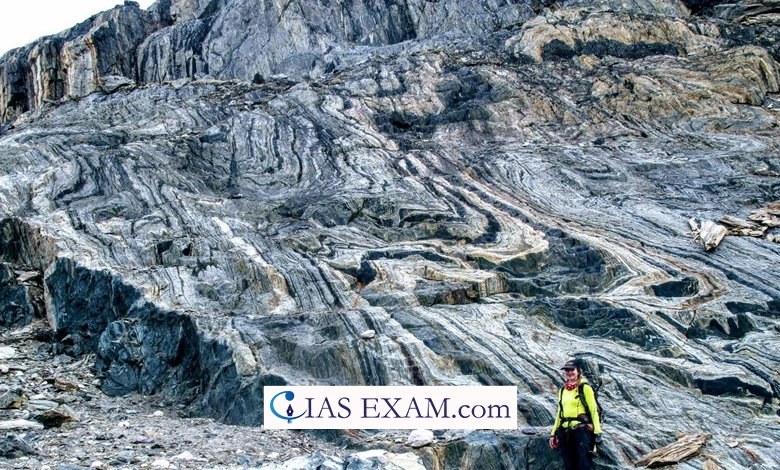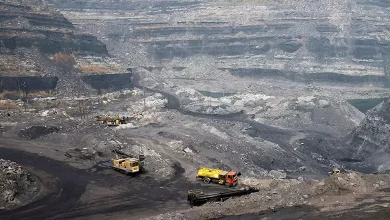Daily Current Affairs for UPSC
Oldest evidence of Earth’s magnetic field found in rocks
Syllabus: Science & Technology [GS Paper - 3]

Context
Recently, Scientists have discovered ancient rocks in greenland in which the oldest evidence of earth’s magnetic field is prominent.
Key Highlights
- The latest scientific results from the Massachusetts Institute of Technology (MIT) and the University of Oxford give us a glimpse of ancient rocks, which were hidden beneath the ice in Greenland. They helped us to know more about the Earth’s first magnetic field. This rock is 3.7 billion years old and furnishes the pioneers of Earth’s magnetic field.
- In these crust rocks, the magnetite minerals became the decisive chronologic reference of strong and viable magnetic fields, which exist today. This finding, published in the Journal of Geophysical Research, greatly supersedes our current knowledge of Earth’s magnetic field history as it evades the previous estimate by as much as 200 million years.
- The implications of this discovery are not limited to mere geological interest. Scientists thus believe that Earth’s magnetic field may have been the very important shield that has both prevented or lessened the damaging effect of solar radiation, and thus created the conditions needed for the emergence and evolution of life.
- By carefully examining the rocks taken from the Isua Supracrustal Belt situated in Greenland, the scientists established the age of these geological formations. This hence permitted not only to rebuild an accurate picture of the antique nature of our planetary magnetic field, but also to develop a pretty solid opinion when it came to the intensity of its ancient manifestation.
- These results underpin the fact that the magnetic field of the Earth is dynamic, revealing the complex interplay between the geological processes and the cosmic phenomena that have influenced the magnetic environment of our planet throughout billions of years.
About Earth’s Magnetic Field
Dynamo Effect and Geodynamo System
- Earth, magnetic field, closest to the sun, dynamo effect, induction by convection in the outer core.
- In this system, the swirling of metallic fluids and our planet’s rotation are interlinked as the currents flowing around build the electromagnetic shape which powers the system.
Protective Magnetosphere
- Additionally into space, the magnetic field of the earth is getting transformed into a protective magnetic shell limiting solar winds and cosmic particles.
- A magnetic hold on the atmosphere, ensuring the existence of a friendly environment for our planet.
Visible Phenomena
- The auroras, the natural luminous displays of the cosmos, also referred to as Northern or Southern Lights, are the most impressive examples of magnetic fields that our planet possesses.
- Photon emission is engendered by charged particles’ interactions with the magnetic field emanating digital auroral phenomena above the planetary magnetic poles.
Magnetic Pole Reversals
- The Earth’ magnetic poles experience a reversal of polarity as reflected in geological records.
- This uneven frequency of the magnetic forcing, where pole shifts change n-s direction, goes back to the last event around 780,000 years ago.
Scientific Significance
- Studying Earth’s magnetic field is very critical for that it can be used to navigate, communicate, etc., moreover for climate research and space explorations.
- Through time scientists continue diligently to study the intricacies of that occurrence and its intense influence on planets in their earlier, current and future phases.
Conclusion
- To summarise, exercise was found to be associated with positive mental outcomes in a statistically significant way in the research participants.
- The finding of ancient rocks with Greenland gave significant information on the magnetic pole of the earth that it was supposedly around 3.7 billion years old. It is the indicator that the magnetic field strength at the time the rocks were formed was similar to modern one and like today it was relatively stable for billions of years. A fundamental element in comprehending the formation of Earth’s magnetic field is pinpointing the early conditions on the planet and studying its capability of supporting the development of life.
- This investigation not only enhances, but also demonstrates the extent of the magnetic field life of Earth planets, which are 200 million years, that attests its importance in creating habitability. Finally, from our comprehension of the magnetic field dynamics of the planets and their relation to habitability the study of these old rocks will help extensively.
Wayforward
- Future research should focus on extending the sampling area to cover different rock types which would provide magnetic field records from more ancient rocks. Furthermore, we can use more-developed analytical techniques to research the contents and magnetization of these rocks, this will help in constructing more detailed prehistory geological pictures.
- Furthermore, researchers working in various fields should be on the same page, transcending boundaries of their disciplines, and help create a general model of the development of the Earth’s magnetic field.
Source: The Hindu
UPSC Mains Practice Question
Q. Explain the significance of the discovery of the oldest evidence of Earth’s magnetic field in rocks and its implications for our understanding of the planet’s geological history. Discuss how this discovery contributes to our knowledge of early Earth’s environment and its relevance to fields such as paleomagnetism, geochronology, and the evolution of life.





.png)



